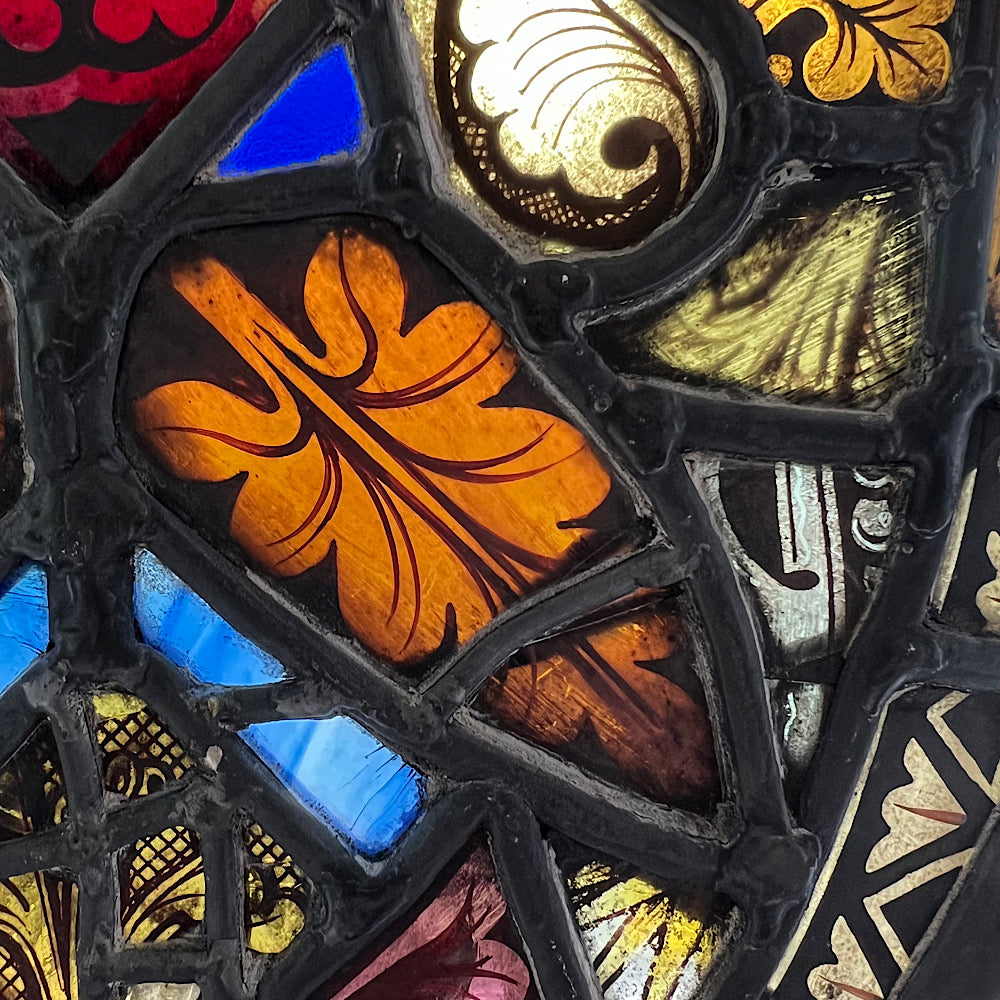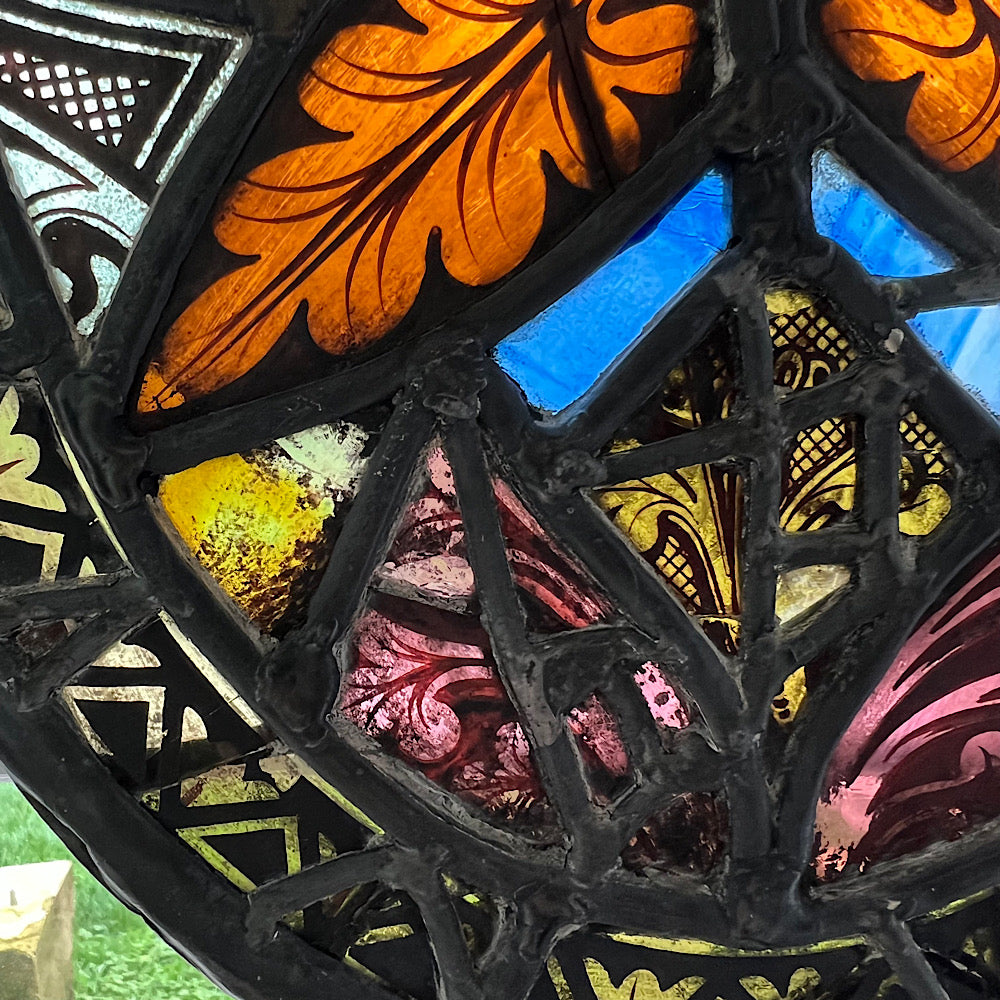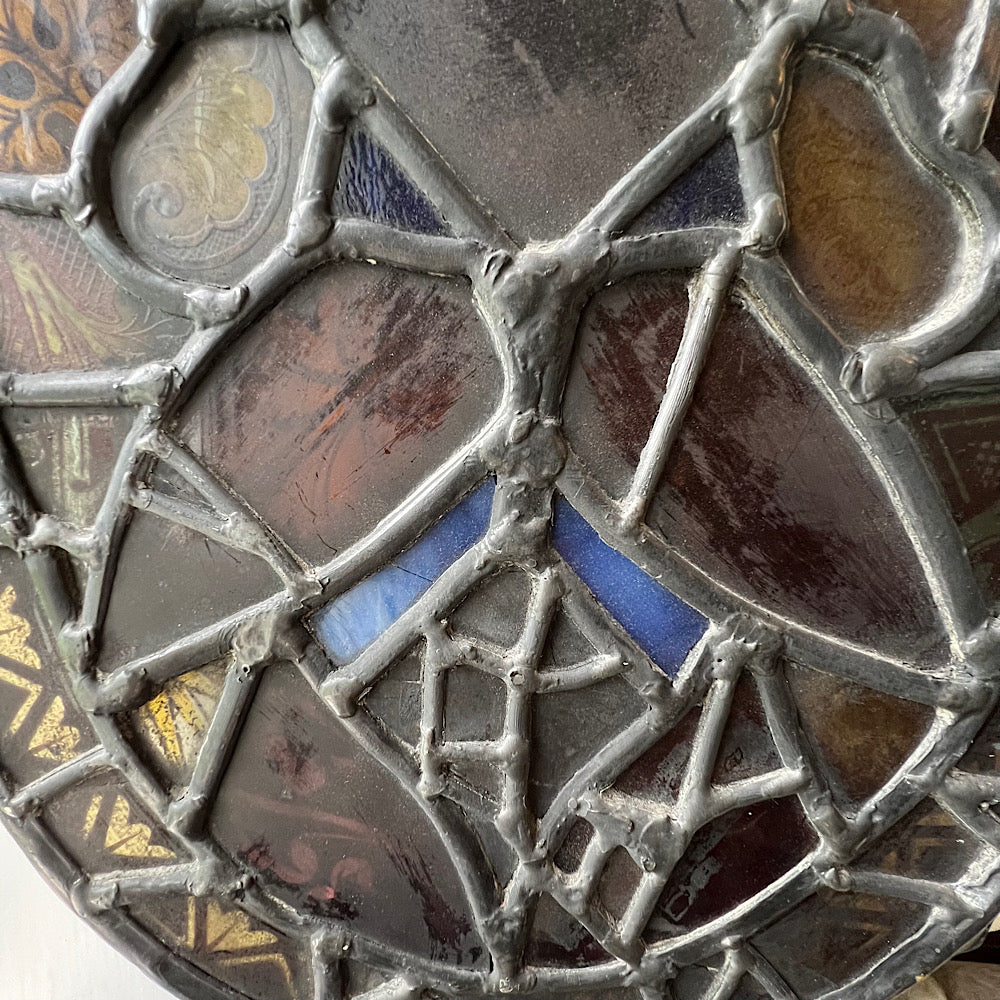18th Century Medieval Stained Glass Window Roundel
SKU: RFF6Y
Couldn't load collection availability
UK Mainland Delivery & Non-Mainland
UK Mainland Delivery & Non-Mainland
* Until Christmas we are offering FREE UK MAINLAND doorstep delivery.
For UK Non-Mainland:
At checkout, please select ‘Pick up’ (not ‘Ship’) to complete your purchase.
You can either:
• Proceed with payment and we’ll send a separate link for delivery, or
• Contact us first for a quote, and we’ll send you a custom order link with delivery included.
Placing items in specific locations can be arranged on request — additional costs will apply. Our trusted fine art and antique couriers, ensuring your item arrives safely and with care.
International shipping
International shipping
International delivery, crating, shipping, and insurance can be arranged on request. We’ll provide a quote based on your needs—additional costs will apply and are payable directly to the shipping company.
You’re welcome to use your own shipping agent, or proceed with our recommended agent using the quote we supply. Payment is made directly to the shipping company.
Alternatively, select ‘Pick up’ at checkout to:
• Collect the item yourself
• Use your own shipping agent from our UK showroom
• Or simply complete your purchase
Contact us for a quote
This magically beautiful stained glass composite window roundel dates to the 18th century and is arranged of fragments of Medieval stained glass that are most likely a combination of English and French pieces, dating between the 13th and 15th centuries.
England had a rich tradition of stained glass in the Middle Ages but much of it was destroyed by official government action or by iconoclastic fervour in the Reformation and Puritan period during religious conflicts that affected the British Isles in the 16th and 17th centuries and had a devastating effect upon the decorative arts and furnishings of the Christian church.
In the 18th century there was a new interest in medieval stained glass and by the following century much glass was being imported, unearthed in excavations or discovered in storage locations in the UK. Sadly, much of the old English stained glass only survives in a fragmentary state.
Our window incorporates different patterns of stylised flat leaves, fleur-de-lys and curling leaf forms and tendrils. Parts of the leaves and border fragments are painted on the reverse in yellow (silver) stain. Silver-stain that developed in the early part of the 14th century. It consisted of painting a compound of silver on the back of the glass which, after firing in a kiln, turned yellow and penetrated, stained, the upper layers of the glass. The front of the glass is covered in a thick coat of brown pigment, which was then picked out to reveal the leaf and stem design. This sort of decoration would have formed part of the background of a decorated stained glass panel. The combination of grisaille, ornamental non-figurative design painted in black line on colorless glass, silver stain, and coloured pop-glass is typical of the 14th and 15th centuries.
- Width: 28 cm (11.02″)
- Height: 48 cm (18.9″)
- Depth: 0.5 cm (0.2″)



















































